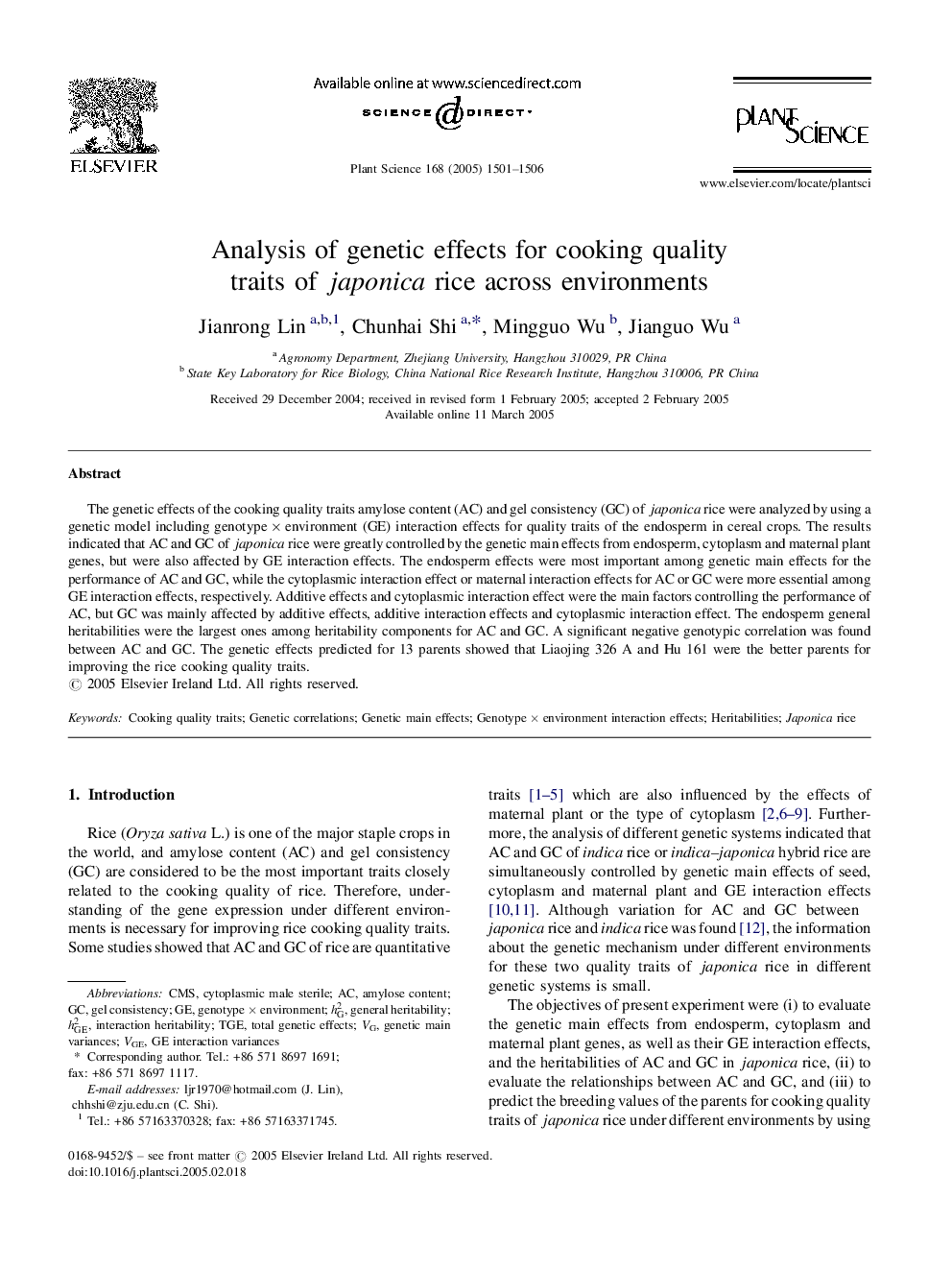| Article ID | Journal | Published Year | Pages | File Type |
|---|---|---|---|---|
| 10841075 | Plant Science | 2005 | 6 Pages |
Abstract
The genetic effects of the cooking quality traits amylose content (AC) and gel consistency (GC) of japonica rice were analyzed by using a genetic model including genotype Ã environment (GE) interaction effects for quality traits of the endosperm in cereal crops. The results indicated that AC and GC of japonica rice were greatly controlled by the genetic main effects from endosperm, cytoplasm and maternal plant genes, but were also affected by GE interaction effects. The endosperm effects were most important among genetic main effects for the performance of AC and GC, while the cytoplasmic interaction effect or maternal interaction effects for AC or GC were more essential among GE interaction effects, respectively. Additive effects and cytoplasmic interaction effect were the main factors controlling the performance of AC, but GC was mainly affected by additive effects, additive interaction effects and cytoplasmic interaction effect. The endosperm general heritabilities were the largest ones among heritability components for AC and GC. A significant negative genotypic correlation was found between AC and GC. The genetic effects predicted for 13 parents showed that Liaojing 326 A and Hu 161 were the better parents for improving the rice cooking quality traits.
Keywords
Related Topics
Life Sciences
Agricultural and Biological Sciences
Plant Science
Authors
Jianrong Lin, Chunhai Shi, Mingguo Wu, Jianguo Wu,
